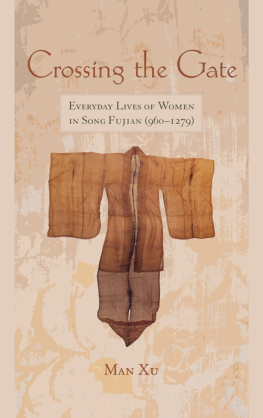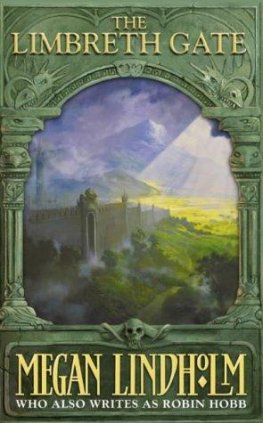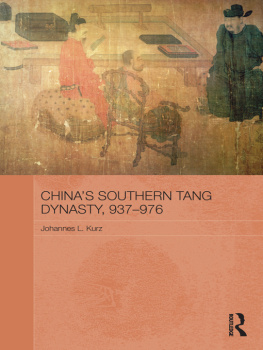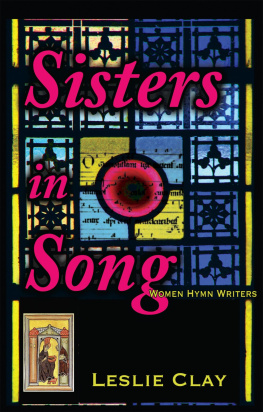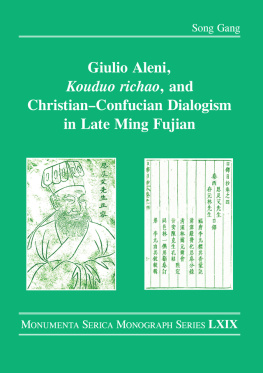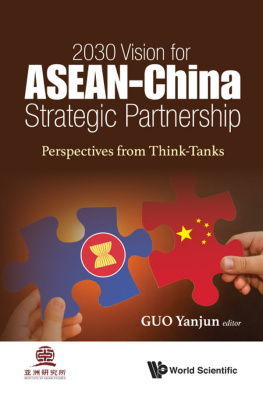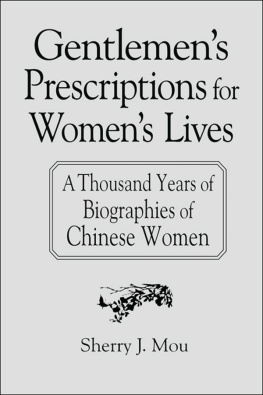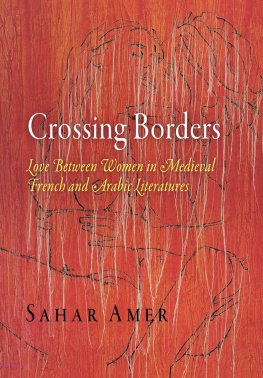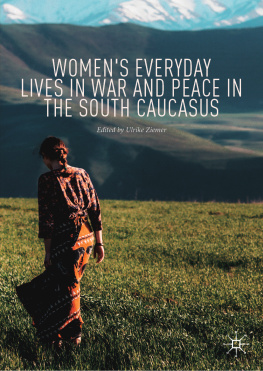Man Xu - Crossing the Gate: Everyday Lives of Women in Song Fujian (960-1279)
Here you can read online Man Xu - Crossing the Gate: Everyday Lives of Women in Song Fujian (960-1279) full text of the book (entire story) in english for free. Download pdf and epub, get meaning, cover and reviews about this ebook. year: 2016, publisher: State University of New York Press, genre: Home and family. Description of the work, (preface) as well as reviews are available. Best literature library LitArk.com created for fans of good reading and offers a wide selection of genres:
Romance novel
Science fiction
Adventure
Detective
Science
History
Home and family
Prose
Art
Politics
Computer
Non-fiction
Religion
Business
Children
Humor
Choose a favorite category and find really read worthwhile books. Enjoy immersion in the world of imagination, feel the emotions of the characters or learn something new for yourself, make an fascinating discovery.
- Book:Crossing the Gate: Everyday Lives of Women in Song Fujian (960-1279)
- Author:
- Publisher:State University of New York Press
- Genre:
- Year:2016
- Rating:3 / 5
- Favourites:Add to favourites
- Your mark:
- 60
- 1
- 2
- 3
- 4
- 5
Crossing the Gate: Everyday Lives of Women in Song Fujian (960-1279): summary, description and annotation
We offer to read an annotation, description, summary or preface (depends on what the author of the book "Crossing the Gate: Everyday Lives of Women in Song Fujian (960-1279)" wrote himself). If you haven't found the necessary information about the book — write in the comments, we will try to find it.
Man Xu: author's other books
Who wrote Crossing the Gate: Everyday Lives of Women in Song Fujian (960-1279)? Find out the surname, the name of the author of the book and a list of all author's works by series.
Crossing the Gate: Everyday Lives of Women in Song Fujian (960-1279) — read online for free the complete book (whole text) full work
Below is the text of the book, divided by pages. System saving the place of the last page read, allows you to conveniently read the book "Crossing the Gate: Everyday Lives of Women in Song Fujian (960-1279)" online for free, without having to search again every time where you left off. Put a bookmark, and you can go to the page where you finished reading at any time.
Font size:
Interval:
Bookmark:

SUNY SERIES IN C HINESE P HILOSOPHY AND C ULTURE
Roger T. Ames, editor

E VERYDAY L IVES OF W OMEN IN S ONG F UJIAN (9601279)
MAN XU

Cover art: Golden silk wide sleeves robe (1235 AD). The garment is a dress for a female, excavated from a tomb sealed in 1235 and found by archaeologists in 1986 in the suburb of Fuzhou. The garment is at the Fujian Museum. Courtesy of The Fujian Museum.
Published by
STATE UNIVERSITY OF NEW YORK PRESS
Albany
2016 State University of New York
All rights reserved
Printed in the United States of America
No part of this book may be used or reproduced in any manner whatsoever without written permission. No part of this book may be stored in a retrieval system or transmitted in any form or by any means including electronic, electrostatic, magnetic tape, mechanical, photocopying, recording, or otherwise without the prior permission in writing of the publisher.
For information, contact
State University of New York Press
www.sunypress.edu
Production, Laurie D. Searl
Marketing, Anne M. Valentine
Library of Congress Cataloging-in-Publication Data
Names: Xu, Man, 1979
Title: Crossing the Gate : Everyday Lives of Women in Song Fujian (9601279) / Man Xu.
Description: Albany : State University of New York Press, [2016] | Series: SUNY series in Chinese philosophy and culture | Includes bibliographical references and index.
Identifiers: LCCN 2016007755 (print) | LCCN 2016023269 (ebook) | ISBN 9781438463216 (hardcover : alk. paper) | ISBN 9781438463223 (e-book)
Subjects: LCSH: WomenChinaHistoryTo 1500. | WomenChinaFujian ShengHistoryTo 1500. | Sex roleChinaFujian ShengHistoryTo 1500. | Social classesChinaFujian ShengHistoryTo 1500. | Social changeChinaFujian ShengHistoryTo 1500. | Fujian Sheng (China)Social life and customs. | Fujian Sheng (China)Social conditions. | ChinaHistorySong dynasty, 9601279.
Classification: LCC HQ1147.C6 X8 2016 (print) | LCC HQ1147.C6 (ebook) | DDC 305.4095109/01dc23
LC record available at https://lccn.loc.gov/2016007755
10 9 8 7 6 5 4 3 2 1
To my parents
Map
Tables
Figures
Eighteen years ago, when I was a junior in the History Department at Beijing University, Professor Deng Xiaonan opened a new course on Women in Tang and Song China. It was the first curriculum on women in pre-modern China available in Chinese universities, and it proved to be a fascinating experiment. The class introduced exciting new perspectives to conduct research on Chinese history and exposed me to the pioneering disciplines of womens history and gender studies. It was in her class that I started to touch on primary sources about women in Chinese history. The narratives are scattered and fragmentary and are generally absent from official histories that I had been reading. They appeared unusual, while at the same time interestingly familiar. I was deeply moved by the biographies of women from more than one millennium ago, which surprisingly resonated with my knowledge of the life experience of my grandmothers and mother. It inspired me to seek womens history that was largely invisible in historical records. Professor Deng offered me hands-on instruction on searching for and analyzing first-hand materials. Meanwhile, she gave me an inclusive reading list of influential books on womens history in pre-modern China that American scholars had published in the 1990s. She generously lent me her collection, considering research books on humanities in English were not easily accessible at that time. Immersed in the scholarship, I was astonished at how thriving and productive this field had been in Western academia. In 2001, as the secretary of the International Symposium on Tang and Song Womens History, I invited dozens of international leading scholars in Chinese womens studies to Beijing University, including Susan Mann, Patricia Ebrey, Dorothy Ko, Beverly Bossler, and Bettine Birge. I was thrilled to meet with these well-known authors and to communicate with them in person, and I was encouraged to further my interest in womens history in the United States.
In the fall of 2002, I joined Columbia University and achieved the good fortune of being assigned to two dedicated advisorsRobert Hymes and Dorothy Ko. At our first meeting, Robert Hymes gifted me his newly published book Way and Byway , which was awarded the Joseph Levenson Book Prize two years later. As a prestigious social historian, he appreciated my interest in local history and shared with me his research experience in the field and his insightful knowledge of womens history. Dorothy Ko, in spite of her early devotion to literary history, developed great enthusiasm for cultural studies. By taking her courses and working as her research assistant, I was impressed with the glamour of material culture and was eager to apply it to my research. In addition to the two advisors, my dissertation was greatly indebted to a number of China historians at Columbia. Robert Harrist taught me the methodologies of art history, JaHyun Haboush and Wei Shang trained me in recovering history with literary sources, Feng Li led me to understand the value of archaeological discoveries, and Conrad Schirokauer conveyed to me the wisdom in deciphering intellectual history. Inspired by these experts from a wide range of fields, I adopted a distinctive interdisciplinary approach to conducting my research.
Whether we can contextualize womens studies in local history largely depends upon the scope of available sources. A brief investigation of womens records limited my choice to a few economically and culturally advanced areas in the Song. Fujian stood out to me because of its exceptional wealth of original material that remained largely unexplored. I had started to collect historical sources for my research for the writing of my masters thesis, and I continued to expand my source pool for my dissertation. I explored sources available at Beijing University (China), Columbia University, the Library of Congress, Harvard University, Tokyo University (Japan) and the Oriental Library (Japan) and received great help from their librarians. Also, the CLIR Mellon Fellowship supported my field trips to Fujian libraries and museums. At the Fujian Provincial Museum, I met with some experienced local archaeologists and was offered special permission to visit their archive center. In the bulky old-style cabinets, I saw piles of discolored folders that were sealed in the 1960s and 1970s and had never been opened since. They were like treasure boxes and revealed to me the devotion of a group of local archaeologists in the chaotic period of the Cultural Revolution. I made a wish to present their contributions to a broad audience by getting my work published, and I am glad it is coming true.
The process of revising the manuscript was long and full of challenges. I have been blessed to have Dorothy Ko as my lifetime mentor. In the difficult times of my career after graduation, her encouragement kept me motivated to move forward. She read my revisions chapter by chapter and quickly responded with valuable comments and suggestions. I also owe thanks to a number of historians who expressed interest in my research and generously granted me constructive advice on revisingDagmar Schfer, Harriet Zurndorfer, Peter Bol, Tillman Hoyt, Ankeney Weitz, Jingzhen Liu, Nanxiu Qian, Guotong Li, and Robert Graham. In the summer of 2014, at the Harvard Conference on Middle-Period China, I presented my work to a few experts in Fujians local history, including John Chaffee, Hugh Clark, and Bettine Birge. Their insightful feedback helped me make this book a real product about Fujian. My special gratitude goes to Beverly Bossler as well. She volunteered to read the entire manuscript and gave me advice on how to present the books value to the utmost. In addition, I am very grateful to the two anonymous readers for their thought-provoking reviews. One was so engaged in reading my manuscript and left extensive hand-written comments on the hard copy, and the other recommended to me intelligent strategies on how to improve and strengthen the manuscript.
Font size:
Interval:
Bookmark:
Similar books «Crossing the Gate: Everyday Lives of Women in Song Fujian (960-1279)»
Look at similar books to Crossing the Gate: Everyday Lives of Women in Song Fujian (960-1279). We have selected literature similar in name and meaning in the hope of providing readers with more options to find new, interesting, not yet read works.
Discussion, reviews of the book Crossing the Gate: Everyday Lives of Women in Song Fujian (960-1279) and just readers' own opinions. Leave your comments, write what you think about the work, its meaning or the main characters. Specify what exactly you liked and what you didn't like, and why you think so.

